#pc xt
Text
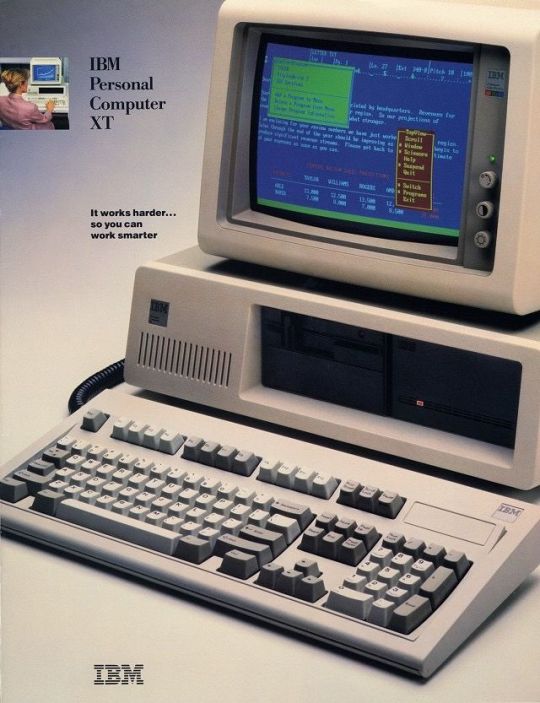
IBM PC XT
512 notes
·
View notes
Text

Occasionally getting old hardware working is less than elegant
24 notes
·
View notes
Text
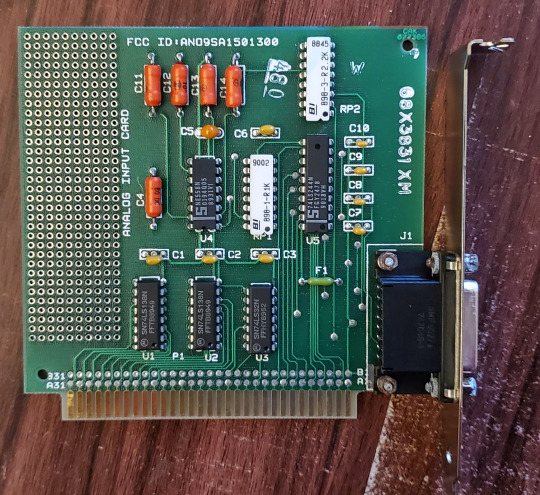
IBM Analog Input Card, aka the original ISA joystick port option
32 notes
·
View notes
Photo
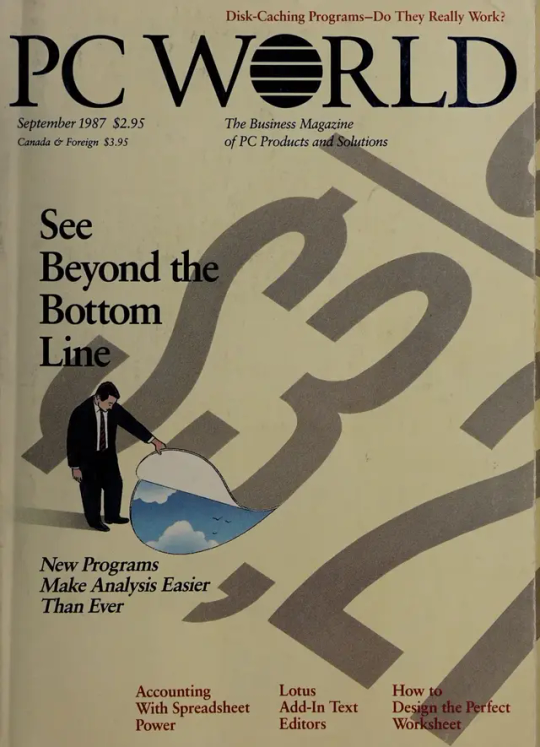
PC World (September 1987)
2 notes
·
View notes
Text
اعلنت AMD عن بطاقة الرسومات Radeon RX 7600 XT بسعر 329 دولار
تم الاعلان رسميا عن بطاقة الرسومات Radeon RX 7600 XT من AMD. بالنسبة للمواصفات ستكون لها نفس وحدة معالجة الرسوميات Navi 33 مثل Radeon RX 7600، فإن الاختلاف الرئيسي يكمن في قسم الـ “VRAM”. يستخدم الطراز 7600 بالفعل مجموعة Navi 33 الكاملة المكونة من 32 وحدة معالجة (CUs)، ولن تتغير واجهة الذاكرة التي هي 128-بت، مما يترك طريقين فقط لتحسين الأداء والميزات: المزيد من الذاكرة الـ “VRAM” و سرعة معالج…
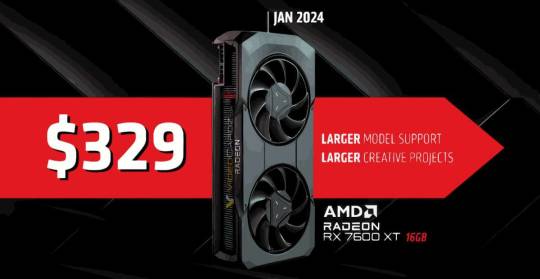
View On WordPress
0 notes
Text
Gigabyte rx 6500 xt GPU (graphic card)
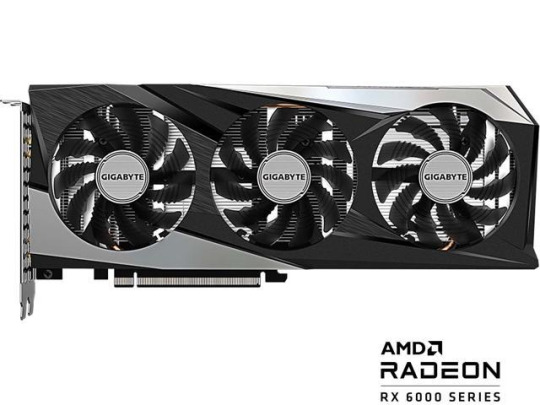
The Gigabyte Rx 6500 XT is a perfect graphics card to where I do not have to adjust really any game graphics. I can basically leave them all set to where they are and have not one stutter in it.
The only game that I do have a little stutter in is New World but that is only because of how many people are gathered in the settlement at the time other than that it runs like a dream. I can play call of duty modern warfare II, Elden Ring and Ark with no issues.
It has 3 cooling fans, 4gb of ram, a display port and an hdmi port which is if you use the display port you will get a crisper and clearer view than using an HDMI cable and it is an AMD Radeon. It has AMD sync built in so it will provide crisp and clear graphics on monitors that are compatible with AMD sync. The AMD Adrenaline software will keep your driver's updated and has some interesting features built specifically for this card.
This includes the ability to overclock the card to get the most performance out of it, though I see no reason to overclock at the moment as all games run at good quality if not at ultra 1080p. In all honesty this is a great low budget graphics card that will pack a punch as big as the high end cards with little to no lag or decrease in graphic quality.
#graphics card#graphics#gpu#6500 xt#gigabyte graphic card#pc part#gaming part#pc gpu#Gigabyte rx 6500 xt GPU (graphic card)#AMD#radeon#rx
0 notes
Text
#gaming pc#pc gamer#ps4#xbox one#pc#gaming#computer#game#gpu#nvidia#intel#intel arc a350m a370m discrete gaming laptop gpus announced intel arc#amd radeon rx 6950 xt 6750 xt 6650 xt faster refresh gpu fsr 2 price india amd#graphic chip price drop shortage end experts claim ethereum gpu supply gpus#amd
1 note
·
View note
Text

Pencept PenPad 200 on IBM PC XT (1983)
251 notes
·
View notes
Note
Hiya Foone, any chance you could identify either of these computers from the classic Czech comedy movie "Slunce, Seno, Erotika?"

I'm really curious what post-Iron Curtain computer they got here
The one on the right appears to be a Toshiba T3100e/40:
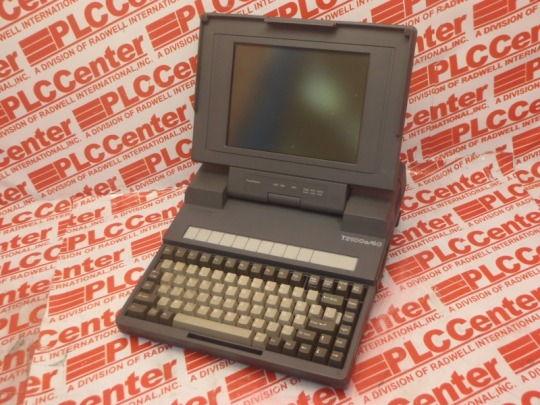
It's got that distinctive gas-plasma display. Love those things.
As for the left one, I'm not sure. I'm guessing an XT clone, there were millions of those.

But I suspect it's a Commodore PC 20-III.
98 notes
·
View notes
Text


IBM pC 5150B On THe LEFT: 512k rAm, with cgA AnD hErcULEs vidEocaRds, 5151 mONitor. oN tHe RiGHt iS: XT turbO (10MHz) CLOnE WitH hERcuLES anD CGA GRAPhics CardS, 640K RAM, AdLib sOUnd, 5153 mONiTor, NEtWorK CARd fOR inteRneT/TeLNet Bbs ACceSs, 20MB ST-225 Mfm haRD DiSk.
506 notes
·
View notes
Text
PolType/Cyfronex
Polish PolType is a family of microcomputer systems developed by Polish engineers in close cooperation with the Polish representative of the British MonoType company (PolType was acquired by the Cyfronex company in 1986, but the original developers remained with the company).
PolType devices were able to control LaserComp and MonoType Imagesetter machines (Imagesetter produces the printing film from which the printing plate is made – nowadays the plate is made directly, and the film is not needed).
The first generation of Poltype (1988) required its own eight-bit computer, the next, Poltype 03 and 04, used a PC XT class computer.
The 510-key POLSET 04 keyboard (for PolType 04) shown in the picture below was also Cyronex's own development. This was also excellent for typing complex mathematical formulas, but through it the functions of the SW were also available (the mouse and WYSIWYG were still in a very experimental stage at that time)

510-key keyboard for the PolType 04 system.
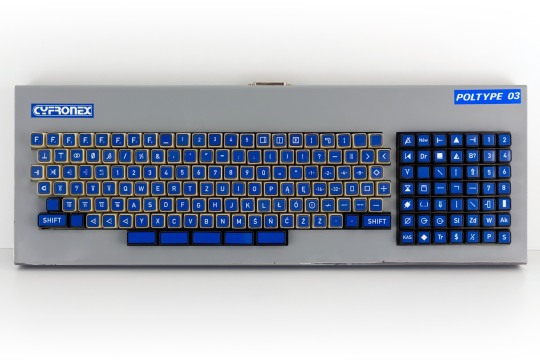
The keyboard of PolType 03 (this system already used IBM XT machines)
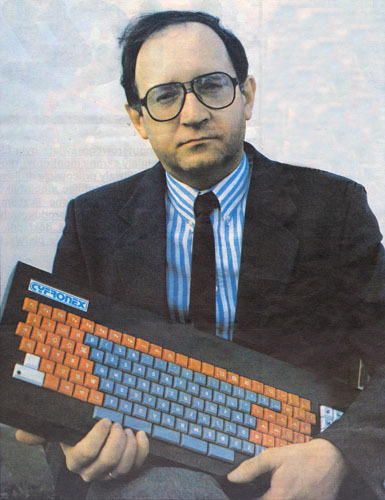
Jacek Sobczyk, co-owner of the company Cyfronex with PolType 03 keyboard (this one also has more buttons than what we are used to)
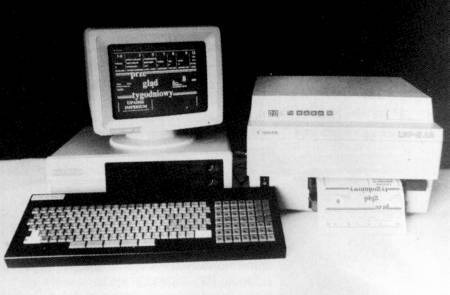
Cyfronex // PolType 03 system
source:
• Tumbler // sailing the cylindrical sea
• Mikro Klan 1988/1
• Bajtek 1988/5
Check these out too if you are interested in retro computing
131 notes
·
View notes
Text
Other Sides of the Coin
That phrase is the guiding philosophy for my computer collection: lets unpack it.
First off, I've been around PC's all my life. While I don't remember it, the family's XT clone, then a 486 and onwards. I know PC's in and out. While they are fascinating machines in their own right, they aren't the only computers out there.
So what is out there? Many systems, all shapes and sizes, commercial and enterprise machines that never see the light of day until they are scrapped and the consumer machines meant for the home. For me the commerical and enterprise machines don't hold that much allure, they are curiosities for sure and one of two of them may find their way into my collection but that's for later. I focus on consumer machines currently.
But wait, there are many of those machines!? How do I keep myself from drowning in silicon and rocks we tricked to think?
Representatives.
You'll see this more in the earlier systems that had a vast array of systems that either competed with the example in my collection or preceded it. CP/M systems were many in a vibrant competitive ecosystem, I simply cannot own an example of every kind that is out there, so instead I settle on a well known unit and say it represents what the other units are.
Lastly, I sort the collection into bittiness and while my decisions are arbitrary and subjective, there is method behind them:
8 Bit Systems: Everyone will think of systems like the C64 but I also class systems like the PC/XT and the TI99/4a in the same category.
Limited color palettes and sounds
expectation to load software from 5.25" disks, cassette tape or cartridge ROM's.
BASIC in ROM.
Majority of the IO or internal operations done in 8 bits.
Limited RAM to 1MB or less.
Examples in my collection:
Commadore C64/C128
IBM PC/XT
Apple IIeP (Representative for the Apple II line)
Kaypro 4-84(Representative for the CP/M ecosystem.)
Texas Instruments TI99/4a
Timex Sinclare 1000
Missing:
Atari 8 bit. :(
16 Bit Systems: Here the lines start to blur and you'll see why.
Enhanced colors and sounds
Expected to load software from hard drives and 3.5" disks, gone are cassettes and cartridges for computers.
Faster CPU's
Majority of the system conducts itself in 16 bit operations.
RAM expanding above 1MB.
Expected to run GUI's
Examples:
Commadore Amiga 1000
Atari ST520
Apple IIgs (16 bit CPU but does everything in 8 bits)
Apple Mac Plus
IBM PC/AT (HA)
Clone PC/386 (full 32 bit CPU but all IO is 16 bits)
32 Bit Systems (Early)
Why do I say early? The 386 is a 32 bit CPU, but it's in the 16 bit category. And to that, I say the 386 didn't have a standard 32 bit expansion slot for it to use, a CPU like the 486 had two.
High color resolutions, and high fidelity sound capabilities.
Hard drives are standard equipment now.
CPU's pushing mid double digit speeds.
Multiple megabytes of RAM are expected
GUI's and multimedia.
CD-ROM is the new hotness
Examples:
Gateway 2000 4dx2/66V
Apple Performa 630CD
Missing:
Commadore Amiga 2000/3000
Atari Falcon
32 Bit Systems (Late)
At this point we are seeing the foundations of the modern computers as we know them today.
Unlimited Colors and Resolutions
Hard drives pushing dozens of gigabytes
RAM in the hundreds of Megabytes
Advanced CPU's with SIMD instructions running at several hundreds of Mhz.
Advanced OS's
Examples:
Compaq Deskpro EN866
Apple Imac G3(750)
Missing:
To be decided
The tail end:
Here the lines blur to the point it's difficult to call, so it's here where I plant the end of my collection, at least for now.
The modern computer as we know it has been invented and we start to shed the legacy of decades of computers that came before them. It is here that the coin has become flat. Apple is still doing their own thing with the Power PC's but will soon drop them in favor of x86. Intel is scratching it's head at the Pentium 4, AMD is ruling the roost with it's wildly successful Athlon processor.
There may be a home for systems in this era in the future as memories coalesces into nostalgia. There is already a root forming with two systems that blur the late 32 bit system lines, a Pentium 4 XP box and a Sawtooth G4.
Perhaps I'll get a G5. That would really blur the lines.
Thank you for reading.
Here is were I will put my wish list. Some of these systems are my biege whales, I would love an Amiga 4000T but at the costs of these machines, it is unlikely without shelling out as much as a decent used car.
Commadore Amiga 4000T
This machine doesn't have a direct comparison with either a PC or a Macintosh, but there are contemporary machines that would be added to the collection with it.
IMSAI or Altair 8800
Mostly for it's front panel toggling goodness. I'd reasonably be just as happy with something like a modern clone for me to twiddle the switches but still have something usable afterwards.
#retro computing#old computers#apple computers#cbm#pc#commodore amiga#atari#collection#philosophy#nostalgic#so nostalgic it hurts
16 notes
·
View notes
Note
Top 5 worse computers from the 80s
While I'm sure someone could come up with a more definitive well-curated list, here's what I came up with on a whim:
Sinclair ZX-81
The ZX-80 was a good, inexpensive step forward for the burgeoning UK computer market. Its successor, the ZX-81, tripped and fell rather than do anything beyond streamlining it for mass production. A real pain in the ass to type on, and notoriously flaky to do any serious work on. Localized in the US as the Timex-Sinclair 1000, it was too weak to really compete with the American market. British users seem to like them but I'd chalk up most of that to nostalgia goggles.
Apple III
Apple tried and failed to make a business machine, and Jobs got his way a bit too much, and it overheated alot because he mandated that it couldn't have a fan. Ultimately, it confused people and was surpassed by better Apple II's. A weird footnote in Apple failures.
IBM PCjr
The answer to a question that nobody asked. Crappy wireless keyboard, intended to be bolted to your home television. Cartridges? On an IBM? WTF is that? The expansion options are hot garbage. Eventually it was upstaged by the Tandy 1000 at its own game. Just get a PC XT. Or a Tandy.
Coleco Adam
Likes to erase its own tapes if you leave them in the drive on power-up due to an electrical surge it shoves through the tape mechanism. The main system power supply is integrated into the printer, so you NEED the chonky printer to be plugged in for it to work. Has those weird phone pad + joystick hybrid controllers. Just get a ColecoVision to play your cartridge games.
Commodore Plus/4
I was going to take a stab at the MAX Machine, but Commodore did worse with the whole concept of the Plus/4. This thing was too cheap for its own good, and went in a completely bonkers direction at the behest of Jack Tramiel. It's supposed to be a cheap business machine to eat the ZX Spectrum's lunch. Why go after the little guy from the UK market? Who knows. Lame rubber chiclet keyboard, totally incompatible with existing Commodore software and most peripherals, and having 121 colors can't save it from being a dumb idea. Apparently it was a hit in eastern Europe.
Remember, pretty much every system has its fanclub, regardless of how flawed, underpowered, or limited a platform it is. So while I personally don't care for any of these machines, if you're mad at me for taking a pot shot at your favorite, do keep in mind that my favorite computer of all time is the VIC-20. You know, the one that most Commodore enthusiasts ignore for only having 5K of RAM having only 8 foreground colors, only 22 columns of screen resolution, and just not being a C64.
23 notes
·
View notes
Text
The rest of the parts for rebuilding Cinnabar should trickle in over the course of today, which is exciting. I haven't built a PC from mostly current generation parts in... actually I don't think I've ever built a system from mainly current parts. The only part getting grandfathered in here is my 6700XT which is still "current generation" because there isn't a 7700 XT yet.
I got really used to working with gigantic server CPU's in University and so now whenever I handle consumer CPU's I'm like what is this, a processor for ants?

38 notes
·
View notes
Text
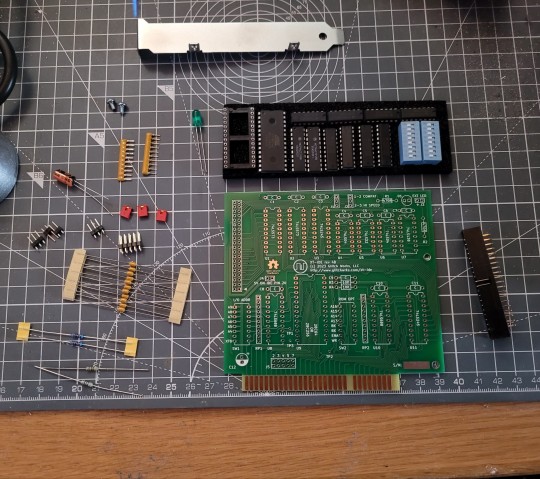
The XT-IDE card I'm hoping to use to enable cross-machine access between the old Toshiba T3100e 80286 and my modern PCs has finally arrived! Now it just needs some soldering work for the assembly process lmao
to be fair you can get them fully assembled too, but since I have a soldering iron and few money, I figured an unassembled board would be both cheaper and more fun
10 notes
·
View notes